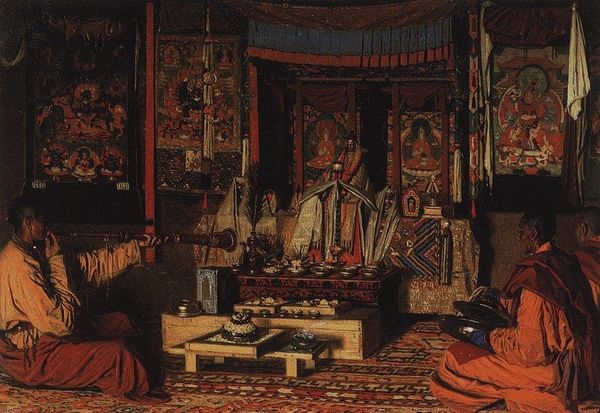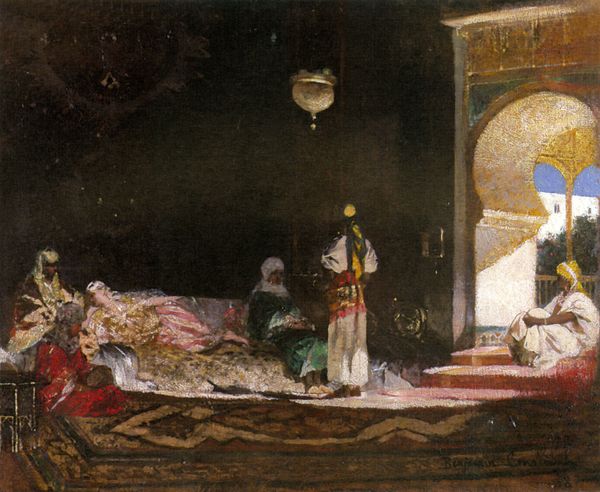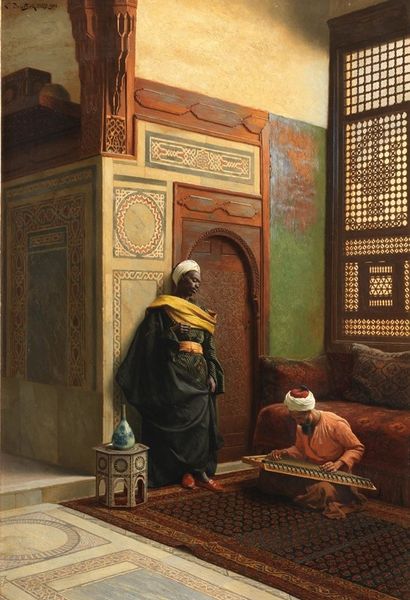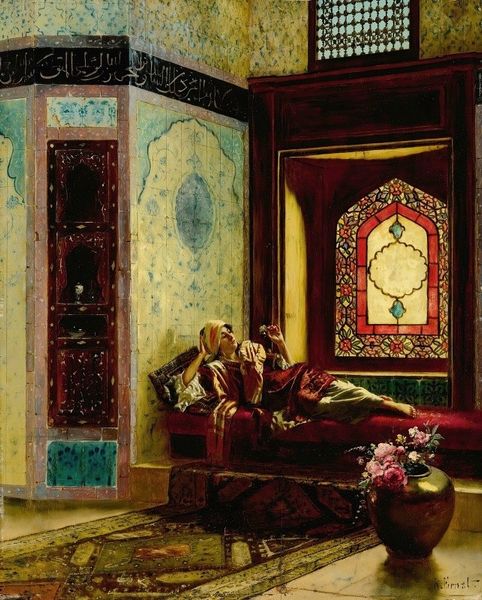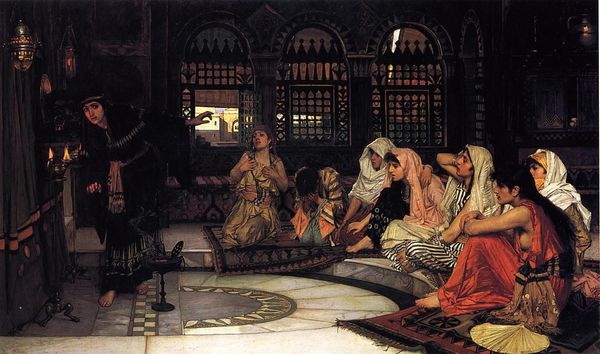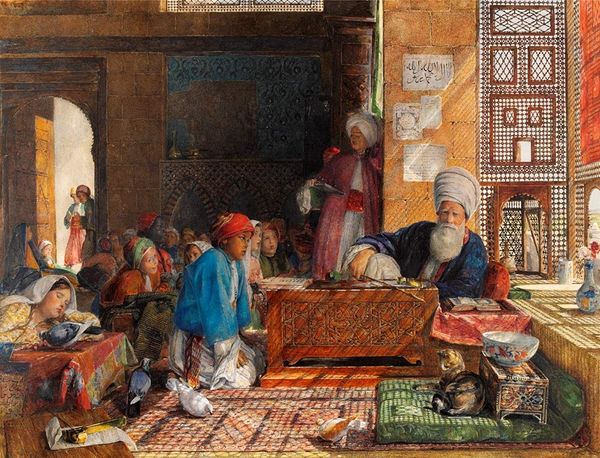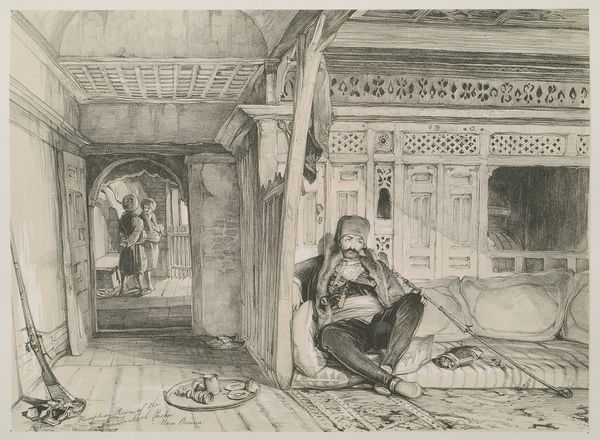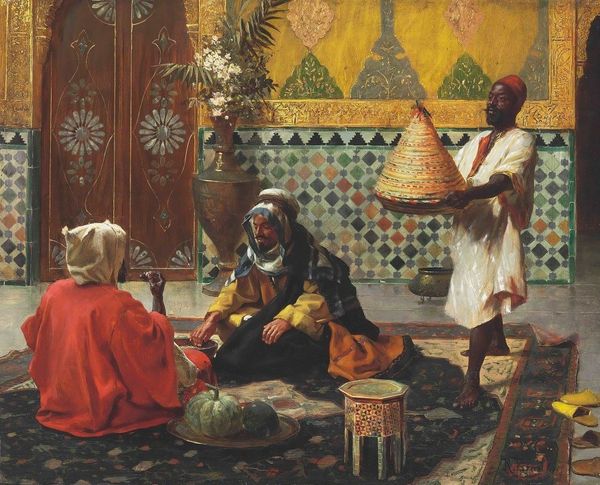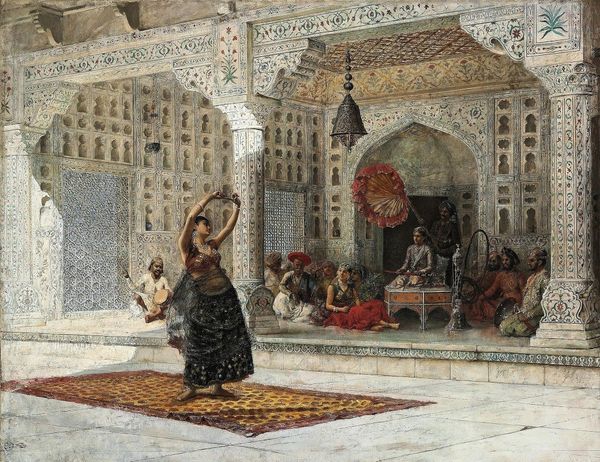
painting, oil-paint
#
portrait
#
figurative
#
painting
#
oil-paint
#
oil painting
#
orientalism
#
islamic-art
#
genre-painting
#
realism
Copyright: Public Domain: Artvee
Editor: This is Vasily Vereshchagin's "Inside the Tent of a Rich Kirghiz," painted between 1869 and 1870 using oil paint. The intricate patterns and the muted color palette create a feeling of warmth, but the subject seems isolated. What structural elements stand out to you in this work? Curator: The immediate and dominating element is, undoubtedly, the structural integrity of the tent itself. The converging lines of the roof create a powerful central vanishing point, drawing the eye inward and upward. Do you notice how the geometric lattice-work provides a foundational structure that is then elaborated by complex ornamentation? Editor: Yes, the eye is drawn to the roof! The geometric structure is overlaid with very elaborate curvilinear patterns, and then with those tassels. What would you say is the function of those repetitive patterns? Curator: They serve to amplify the inherent structure of the tent. It's also worthwhile considering how these patterns function semiotically. They can act as visual echoes, harmonizing with the man's robe as well as the rugs. Vereshchagin creates a self-contained world within this canvas, a holistic network where visual elements communicate directly with each other through repetitive shapes, colors, and patterns. What effect is created by limiting the space to primarily earth-tones? Editor: I guess by limiting the palette it gives us an enclosed sensation? What really strikes me is how a relatively sparse interior becomes quite visually rich through pattern alone. Curator: Precisely! Vereshchagin invites us to examine the capacity for visual structures to generate meaning and affect. The lack of bright color does create a meditative experience that is sustained by line and pattern. Editor: I will never see a tent the same way again! Thanks for sharing your perspective.
Comments
No comments
Be the first to comment and join the conversation on the ultimate creative platform.
